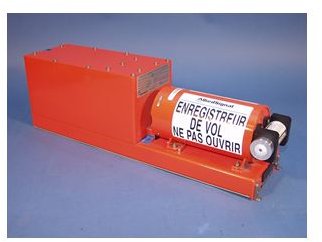Inside the Black Box in Airplanes - Design, Function and Future of Flight Data Recorders
How a Black Box Works
The black box in airplanes works directly with a device called the flight-data acquisition unit (FDAU). This uses a variety of sensors and systems to record analog and digital signals, which it transfers via a secured transmission line to the flight data recorder (FDR). The FDAU unit records such data as the function of the flight controls, position of the actuator, time of day and engine status. In all, the United States federal government mandates that 88 specific parameters of the flight data be recorded onto the black box at all times. This data is updated in real time and can increase the flow of information if extreme changes begin to take place, giving potential investigators of a crash a more detailed readout of exactly what happened. The FDR is capable of preserving up to 25 hours worth of data. Every black box in airplanes is checked annually to make sure it is functioning correctly.
Development of the Flight Data Recorder
The first attempt to create an FDR was in 1939. Designers at the Marignane flight test center in France wanted to establish a way to catalog the reason for failed test flights. They used photographic film that recorded a latent image of the altitude and speed in the event of failure. Unfortunately, this method was not commercially viable for civilian craft.
The next design idea came in 1956 after a series of crashes in Australia. Dr. David Warren developed a way to record the conversation of the flight crew. The Aeronautical Research Laboratory where Dr. Warren worked helped design a fireproof case that could withstand high level shocks. Known at the time as the “Red Egg” due to its color and shape, the design ultimately became standard issue throughout Australia. Soon the “Red Egg” gave way to new designs and the implementation of the modern data recording. However, the exact reason an FDR is referred to as a black box today is relegated to speculation.
Above right: Flight Data Recorder. (Supplied by the National Transportation Safety Board; Public Domain; https://upload.wikimedia.org/wikipedia/commons/6/6a/Fdr_sidefront.jpg)
Making the Black Box Survive a Crash
The group responsible for standardizing the FDR is the International Civil Aviation Organization (ICAO), an agency operating under the auspices of the United Nations. This is accented by additional design requirements mandated by the Federal Aviation Administration within the U.S. EUROCAE is the overall regulations that stipulate exactly how the black box in airplanes should be designed. According to the definitions, all FDR devices must be able to withstand g-forces of 3400 for at least 6.5 milliseconds. They must be able to withstand extreme penetration and high-temperature fires. Additional regulations require that they be operable up to 20,000 feet (6,000 m) under water. In order to accommodate these rules, black boxes are positioned in the tail of the aircraft inside a crush zone to reduce shock. They are fitted inside two titanium shells and insulated for high-temperature conditions. Despite the name, a black box is actually painted bright orange to make recovery more efficient. In addition, they emit a locator beacon for up to 30 days to help investigators locate its whereabouts, most notably when the FDR is under water.
Potential Future Designs of Flight Data Recorders
A number of new designs are being investigated to make the black box in airplanes more efficient and capable of better surviving crashes. Concepts such as self-ejection have been addressed, as have the idea that a digital down-link may be the most beneficial. Either way, since its original inception in the late 1930s, FDR units have helped investigators unravel some of the most pressing of airplane crashes, helping aviation experts avoid recurring problems that could cost the lives of many more people.
Additional Bright Hub Articles
How Bird Strikes Can Cause Plane Crashes
Report Released on 777 Crash in London
Resources
“Flight Data Recorders” Airlines.org (https://www.airlines.org/operationsandsafety/engineering/EMMC+Flight+Data+Recorders.htm)
“How Black Boxes Work” ThomasNet News (https://news.thomasnet.com/IMT/archives/2009/02/how-airplane-black-boxes-work-cvr-fdr-recording-devices.html)
